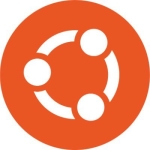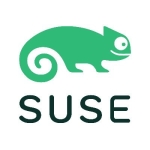What is our primary use case?
We use it for security purposes. Linux, or Solaris, offers more security and reliability than Windows operating systems. Windows is easier to attack.
Most files used by hackers are executables, and if your vendor's operating system isn't secure, that's a problem. That's why we use Oracle Linux; it's compatible with our database.
What is most valuable?
If we use Linux, Solaris, or some other operating systems, we have to build a lot of packages using RPMs (the packet manager). That's a difficult task. With Oracle Linux, we use a single command to update from the Oracle website.
It updates in minutes and downloads all necessary RPMs required for your database. This allows us to install our Oracle database without errors on Oracle Linux. We can prepare our server within 30 minutes if we have a good internet speed. Oracle platforms are steady and robust.
What needs improvement?
The main challenge can be compatibility with products from other companies. When you mix products from different vendors, you might experience difficulties. Using products from the same platform simplifies things.
Before Oracle Linux existed, back in 2001 and 2003, Oracle didn't have its own operating system and used other versions of Linux. We faced problems with these. For example, the earlier Linux versions were 32-bit operating systems. This limited the amount of memory we could allocate to our Oracle database instances. Let's say we had a server with 128 GB of RAM; with a 32-bit Linux operating system, we couldn't use all of it for the database.
When later Linux releases became 64-bit, this limitation disappeared, giving us much more memory to work with. The compatibility with Oracle products is a big advantage. It makes it easier for DBAs (Database Administrators) to manage our databases. If my boss tells me two or three new servers are arriving tomorrow, it's not a problem. I can quickly set them up and prepare them – even doing installations on multiple servers at the same time.
Sometimes we have applications that only run on operating systems like Windows, creating difficulties. Microsoft's platform is easier for some people to understand, but troubleshooting issues can be quite challenging, even for experienced programmers. In contrast, troubleshooting on the Oracle platform is much simpler, which is a key benefit.
For how long have I used the solution?
I have been using it since 2004.
What do I think about the stability of the solution?
When we start the installation, we decide the purpose of the server based on the expected database size. If the database is under 100 GB, we will allocate resources accordingly. If the database will be about 100 terabytes or 500 terabytes, then we adjust our allocation. Sometimes, in our UAT (User Acceptance Testing) databases, we allocate less memory, which can cause some minor issues.
Otherwise, in production environments, we take our time. When switching to new hardware, we dedicate at least three months to proper testing. We purchase hardware licenses, software licenses, and database licenses all together.
We never rush installation because we conduct thorough testing. We test everything from the production database to the standby database. We heavily load the standby database, and if it performs perfectly, then we switch roles – standby becomes production and vice versa. We perform many transactions on both sides to check the load balance.
Once satisfied, let's say we have 20,000 users, each with approximately three active sessions – that's potentially 60,000 sessions. We observe how the server handles this, how much CPU is consumed during peak times.
Peak times in most organizations are generally from nine to five, with cool down from ten to twelve, then after breaks, again from 02:00 to 04:30 P.M. We monitor CPU consumption and RAM utilization during these peak hours. We check every step, and only when we say, "Okay, this server can support our new hardware and software, we have no issue" – only then do we make the switch.
What do I think about the scalability of the solution?
How are customer service and support?
We are happy. We are using it. We recommend it to our students. We also recommend it to our friends.
How was the initial setup?
Oracle installations are never a problem for us. We've been using Oracle for over 23 years. Even with new features added in later versions, we have no issues because of our extensive experience.
Oracle provides two options for installation:
- GUI (graphical user interface) and
- CLI (command-line interface).
We use both and have no problems.
We have a separate database server. It's not part of the cloud; it's an Oracle RAC.
Oracle RAC is a combination of multiple servers: two servers, four servers, eight servers, even sixteen servers. It's a combination of multiple servers. Oracle Linux is only just used on the server side, not on the client side.
What about the implementation team?
Primarily, it's the DBAs (Database Administrators) who control and use the database servers. Network and security departments generally use Windows operating systems. They don't deal with Linux commands as much because they have limited access and manage fewer servers – maybe two, three, four, or a maximum of ten. In contrast, we have many database servers, and for security reasons, we prefer Linux. We don't have Windows servers for our database work.
What's my experience with pricing, setup cost, and licensing?
Oracle is expensive compared to the Microsoft platform. with much money.
We have a license for each and every one, but we have a separate Oracle IT procurement department that deals with the costs.
What other advice do I have?
I'd recommend that you use it. The main challenge for new users of Linux is the command-line interface (CLI). It can be intimidating if you're not familiar with it.
However, Oracle provides excellent manuals and installation guides on its website. If you follow those guidelines, you won't have problems. Oracle Linux is secure and reliable.
Overall, I would rate the solution a ten out of ten. It is a good product.
Disclosure: My company does not have a business relationship with this vendor other than being a customer.
















